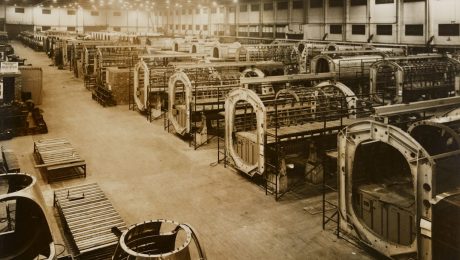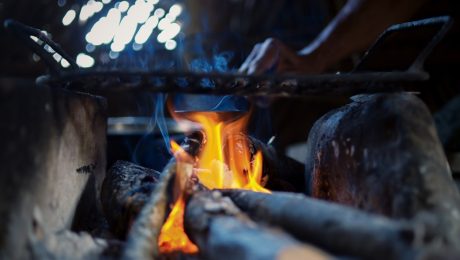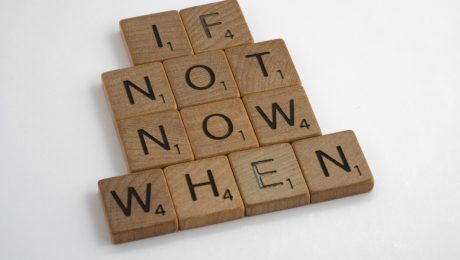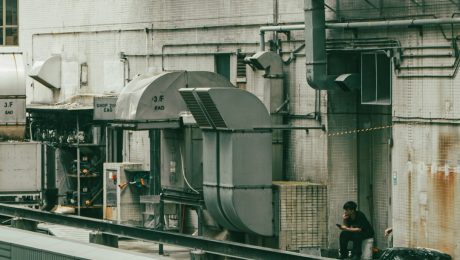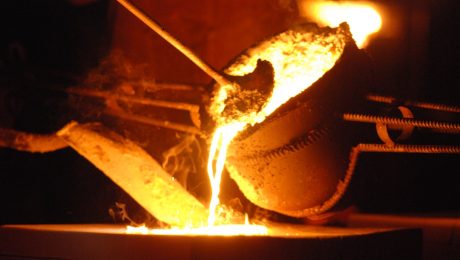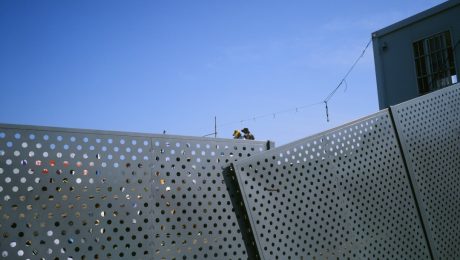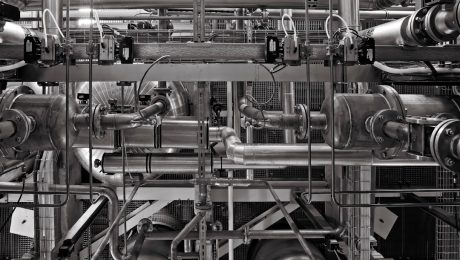The pursuit of zero-defect production is a challenging yet rewarding endeavor. It represents a fundamental shift in manufacturing philosophy, moving from reactive quality control to proactive defect prevention. While achieving absolute zero defects might be practically impossible, striving for this ideal drives continuous improvement and fosters a culture of excellence. This post delves into the strategies and considerations involved in implementing and maintaining zero-defect production goals.
Understanding the Zero-Defect Mindset
The foundation of zero-defect production lies in a profound change in mindset. It’s not simply about catching defects at the end of the production line; it’s about preventing them from occurring in the first place. This requires a holistic approach that involves every member of the organization, from management to the shop floor. A strong commitment to quality must permeate every aspect of the process. This includes:
- Employee Empowerment: Giving employees the authority and tools to identify and correct potential problems before they become defects.
- Proactive Problem Solving: Implementing systems for identifying root causes of defects and developing preventative measures.
- Continuous Improvement Culture: Fostering a culture where continuous improvement (Kaizen) is valued and actively pursued.
- Open Communication: Establishing clear communication channels to ensure that potential problems are identified and addressed promptly.
Implementing Robust Quality Control Systems
Effective quality control systems are the backbone of zero-defect production. These systems should be comprehensive, encompassing all stages of the production process. Key elements include:
- Statistical Process Control (SPC): Using statistical methods to monitor and control the production process, identifying variations that could lead to defects.
- Regular Inspections: Conducting regular inspections at various stages of production to identify and rectify defects early.
- Automation: Utilizing automation where possible to reduce human error and improve consistency.
- Preventive Maintenance: Implementing a robust preventive maintenance program to minimize equipment downtime and ensure consistent product quality.
- Supplier Management: Working closely with suppliers to ensure that incoming materials meet the required quality standards.
Leveraging Lean Manufacturing Principles
Lean manufacturing principles are perfectly aligned with the goals of zero-defect production. By eliminating waste and streamlining processes, lean manufacturing reduces the opportunities for defects to occur. Key lean principles to integrate include:
- Value Stream Mapping: Identifying and eliminating non-value-added steps in the production process.
- 5S Methodology: Organizing the workplace to improve efficiency and reduce errors.
- Just-in-Time (JIT) Inventory: Reducing inventory levels to minimize waste and improve flow.
- Kanban Systems: Using visual signals to manage workflow and prevent overproduction.
- Poka-Yoke (Mistake-Proofing): Designing processes and equipment to prevent errors from occurring.
Embracing Six Sigma Methodology
Six Sigma is a data-driven methodology focused on reducing variation and improving quality. Its rigorous approach to problem-solving and process improvement is highly effective in achieving zero-defect goals. Key aspects of Six Sigma include:
- DMAIC Cycle (Define, Measure, Analyze, Improve, Control): A structured approach to identifying and solving quality problems.
- Statistical Analysis: Using statistical tools to analyze data and identify root causes of defects.
- Process Capability Analysis: Assessing the ability of a process to meet quality requirements.
- Control Charts: Monitoring process performance over time to detect deviations from target values.
- Root Cause Analysis: Utilizing techniques such as the 5 Whys to identify the underlying causes of defects.
Overcoming Challenges in Achieving Zero Defects
While the pursuit of zero-defect production is highly beneficial, it’s crucial to acknowledge the inherent challenges. These include:
- High Initial Investment: Implementing robust quality control systems and training employees can require significant upfront investment.
- Resistance to Change: Overcoming resistance to change from employees accustomed to traditional methods can be difficult.
- Complexity of Processes: In complex manufacturing processes, identifying and eliminating all sources of defects can be challenging.
- Human Error: Despite best efforts, human error remains a potential source of defects.
- Maintaining Momentum: Sustaining the commitment to continuous improvement over the long term is crucial.
Addressing these challenges requires strong leadership, commitment from all stakeholders, and a willingness to adapt and improve continuously.
By embracing a holistic approach that incorporates a zero-defect mindset, robust quality control systems, lean manufacturing principles, Six Sigma methodologies, and proactive problem-solving, organizations can significantly improve their quality, reduce waste, and achieve remarkable progress towards their zero-defect production goals. While absolute perfection might remain elusive, the relentless pursuit of it drives continuous improvement and delivers tangible benefits.
SEO Tags:
zero-defect manufacturing, quality control strategies, lean manufacturing techniques, six sigma implementation, defect prevention methods
Steel pipes are ubiquitous in construction, infrastructure, and various industries. Understanding the different manufacturing processes is crucial for selecting the right pipe for a specific application. Two primary methods stand out: hot-finishing and heat-treating. While both involve heat, they achieve different results, impacting the pipe’s properties and suitability for diverse projects. This comprehensive guide delves into the intricacies of hot-finished and heat-treated pipes, clarifying their differences and applications.
1. The Hot-Finishing Process: Shaping Steel at High Temperatures
Hot-finishing is a primary steel pipe manufacturing process involving rolling a heated steel billet or bloom into a seamless or welded pipe. The high temperature (typically above the steel’s recrystallization temperature) allows for significant plastic deformation, making the process efficient and cost-effective. The heated steel is passed through a series of rollers, progressively reducing its diameter and forming the cylindrical shape. This process results in a pipe with a relatively coarse grain structure. After rolling, the pipe undergoes straightening, cutting to length, and potentially other finishing operations, such as beveling or threading.
Advantages of Hot-Finished Pipes:
- High production rate and cost-effectiveness.
- Suitable for large-diameter pipes.
- Good strength and ductility for general applications.
Disadvantages of Hot-Finished Pipes:
- Potentially lower yield strength and tensile strength compared to heat-treated pipes.
- Surface finish may be less precise.
- Not ideal for applications requiring high strength or specific mechanical properties.
2. Heat-Treating: Enhancing the Properties of Steel Pipes
Heat-treating is a secondary process applied to enhance the mechanical properties of steel pipes, often starting with hot-finished pipes. It involves carefully controlled heating and cooling cycles to modify the microstructure of the steel, thereby altering its strength, hardness, toughness, and ductility. Common heat treatments include annealing, normalizing, quenching, and tempering. Each treatment aims to achieve specific properties depending on the intended application.
Different Heat Treatment Methods and Their Effects:
- Annealing: Reduces internal stresses and improves ductility.
- Normalizing: Refines the grain structure and improves mechanical properties.
- Quenching: Rapid cooling to increase hardness and strength.
- Tempering: A controlled heating after quenching to reduce brittleness and improve toughness.
3. Comparing Mechanical Properties: Strength, Ductility, and Toughness
The key difference between hot-finished and heat-treated pipes lies in their mechanical properties. Hot-finished pipes generally exhibit good ductility (ability to deform without breaking) and moderate strength. Heat-treated pipes, particularly those quenched and tempered, possess significantly higher yield strength, tensile strength, and hardness, but may have reduced ductility compared to their hot-finished counterparts. The choice depends on the application’s demands. High-pressure applications might necessitate the enhanced strength of heat-treated pipes, while applications requiring flexibility might favor hot-finished pipes.
4. Applications of Hot-Finished and Heat-Treated Pipes
Hot-finished pipes are commonly used in applications where high strength isn’t paramount, such as:
- Water and sewage pipelines.
- General construction frameworks.
- Low-pressure fluid conveyance.
- Agricultural irrigation systems.
Heat-treated pipes, on the other hand, find their niche in demanding applications requiring superior mechanical properties:
- High-pressure pipelines (oil and gas).
- Pressure vessels.
- Structural components in heavy machinery.
- Applications requiring high impact resistance.
5. Choosing the Right Pipe: Factors to Consider
Selecting the appropriate pipe type depends on several factors:
- Intended application: What is the pipe’s purpose (e.g., carrying high-pressure fluid, supporting structural loads)?
- Required mechanical properties: What levels of strength, ductility, and toughness are necessary?
- Budget: Heat-treated pipes typically cost more due to the additional processing.
- Environmental conditions: Will the pipe be exposed to harsh weather or corrosive substances?
- Industry standards and regulations: Adherence to relevant codes and standards is crucial for safety and compliance.
Consulting with a qualified engineer or pipe supplier is recommended to ensure the correct pipe is chosen for your specific project requirements.
In conclusion, understanding the differences between hot-finished and heat-treated pipes is vital for successful project execution. While hot-finishing provides cost-effective solutions for general applications, heat-treating unlocks superior mechanical properties for demanding situations. Careful consideration of the application’s demands and the pipe’s properties will lead to the optimal choice.
Tags: hot-finished pipes, heat-treated pipes, steel pipe manufacturing, pipe properties, steel pipe applications
In today’s dynamic business landscape, standing still is equivalent to falling behind. The ability to adapt, innovate, and consistently improve is no longer a competitive advantage—it’s a necessity for survival. This is where a culture of continuous improvement, often referred to as Kaizen, comes into play. This blog post delves into the core principles and practical strategies for fostering a thriving culture of continuous improvement within your organization.
1. Understanding the Foundation: What is Continuous Improvement?
Continuous improvement, at its heart, is a philosophy dedicated to the ongoing pursuit of excellence. It’s not about making massive, disruptive changes overnight; instead, it focuses on small, incremental improvements made consistently over time. This iterative approach allows organizations to identify inefficiencies, address bottlenecks, and enhance processes gradually, leading to significant overall gains in productivity, quality, and efficiency. Kaizen, a Japanese term meaning “change for the better,” embodies this philosophy perfectly. It emphasizes the collective contribution of every team member, fostering a sense of ownership and shared responsibility for improvement.
The key principles of continuous improvement include:
- Customer focus: Improvements are driven by the needs and expectations of customers.
- Data-driven decision making: Decisions are based on evidence and analysis, not assumptions.
- Process orientation: Focus is placed on optimizing workflows and eliminating waste.
- Teamwork and collaboration: Improvement initiatives are collaborative efforts involving all stakeholders.
- Continuous learning and adaptation: Organizations constantly learn from their experiences and adapt their approaches.
2. Cultivating a Culture of Open Communication and Feedback
A culture of continuous improvement cannot thrive in an environment of silence and fear. Open communication is paramount. Employees at all levels must feel comfortable sharing their ideas, concerns, and suggestions for improvement without fear of retribution. This requires establishing clear channels for feedback, such as regular team meetings, suggestion boxes, anonymous surveys, and open-door policies. Furthermore, management must actively solicit and respond to feedback, demonstrating that their input is valued and acted upon. This fosters a sense of trust and psychological safety, encouraging employees to actively participate in the improvement process.
Implementing regular feedback mechanisms, such as 360-degree reviews or peer-to-peer feedback sessions, can significantly enhance communication and identify areas needing improvement. Creating a safe space for constructive criticism is crucial; focusing on solutions rather than blame is essential for fostering a positive and productive environment.
3. Empowering Employees: The Key to Sustainable Improvement
Continuous improvement is not a top-down initiative; it’s a collaborative endeavor. Empowering employees to identify and implement improvements is crucial for its success. This means providing them with the necessary training, tools, and autonomy to make a real difference. Delegating authority, providing opportunities for skill development, and recognizing and rewarding contributions are key elements in fostering employee empowerment. When employees feel valued and trusted, they are more likely to take ownership of their work and actively seek opportunities for improvement.
Implementing initiatives such as Kaizen events (focused workshops for process improvement) or providing employees with the authority to stop the production line if they identify a potential safety hazard are excellent examples of empowerment. By investing in their development and granting them decision-making power, organizations can unlock the full potential of their workforce and drive significant improvements.
4. Measuring and Tracking Progress: Data-Driven Improvement
While the spirit of continuous improvement is about ongoing progress, it’s crucial to measure and track that progress to ensure effectiveness. Establishing key performance indicators (KPIs) allows organizations to monitor the impact of improvement initiatives and identify areas where further attention is needed. These KPIs should be aligned with the overall strategic goals of the organization and should be regularly reviewed and adjusted as needed. Data-driven decision making is essential for ensuring that resources are allocated effectively and that improvement efforts are focused on the areas that will yield the greatest impact.
Utilizing data visualization tools to present progress clearly and concisely is crucial. Regular reporting and analysis of KPIs should be incorporated into organizational processes to maintain transparency and accountability. This data-driven approach ensures that the continuous improvement journey is not only sustained but also optimized for maximum effectiveness.
5. Building a Culture of Learning and Adaptation
Continuous improvement is a journey, not a destination. Organizations must embrace a culture of learning and adaptation to continually refine their approaches and stay ahead of the curve. This involves fostering a learning environment where mistakes are viewed as opportunities for growth, rather than failures to be avoided. Regular training and development programs, access to relevant resources, and a culture of knowledge sharing are essential elements in cultivating this learning culture. Organizations should encourage experimentation and innovation, recognizing that not all initiatives will be successful, but that the learning gained from both successes and failures is invaluable.
Post-implementation reviews, where teams analyze the results of improvement initiatives and identify lessons learned, are crucial for continuous learning. These reviews should not only focus on quantifiable results but also on the process itself, identifying areas for improvement in the implementation approach. By embracing a culture of continuous learning and adaptation, organizations can ensure that their continuous improvement journey remains dynamic and effective.
By embracing these principles and strategies, organizations can cultivate a thriving culture of continuous improvement, driving sustainable growth and achieving lasting success. The journey to Kaizen is a continuous process, requiring consistent effort and commitment, but the rewards are immeasurable.
SEO-Friendly Tags:
- Continuous Improvement
- Kaizen
- Lean Management
- Process Improvement
- Organizational Culture
body { font-family: sans-serif; line-height: 1.6; }
h1, h2, h3 { color: #333; }
h1 { font-size: 2.5em; }
h2 { font-size: 2em; }
h3 { font-size: 1.5em; }
At GloballSteel, quality isn’t just a department; it’s the cornerstone of our entire operation. We understand that our success hinges on delivering superior steel products that meet and exceed our customers’ expectations. This commitment is reflected in our comprehensive Quality Management System (QMS), a meticulously crafted framework designed to ensure consistent excellence throughout our entire value chain.
ISO 9001 Certification: The Foundation of Our QMS
Our QMS is built upon the internationally recognized ISO 9001 standard. This certification demonstrates our unwavering dedication to providing consistently high-quality products and services. The ISO 9001 framework provides a robust structure for managing our processes, ensuring traceability, and continually improving our performance. Regular audits and internal reviews guarantee adherence to the standard, fostering a culture of continuous improvement within the organization. This certification isn’t just a badge of honor; it’s a testament to our commitment to meeting the rigorous demands of global markets and exceeding customer expectations.
Rigorous Quality Control at Every Stage
Our commitment to quality begins at the source. From raw material selection to the final product delivery, GloballSteel employs a multi-layered quality control system. This involves stringent checks at each stage of the manufacturing process, utilizing advanced testing equipment and methodologies. Our skilled quality control personnel meticulously monitor every aspect of production, ensuring that each batch of steel meets our exacting specifications. This includes chemical composition analysis, mechanical testing (tensile strength, yield strength, elongation), and dimensional inspections. Any deviations from established standards trigger immediate corrective actions, ensuring that only the highest-quality products leave our facilities.
Continuous Improvement: The Driving Force of Excellence
At GloballSteel, we believe that continuous improvement is not just a goal; it’s an ongoing process. Our QMS incorporates a robust system for identifying areas for improvement and implementing corrective and preventive actions. Regular internal audits, customer feedback analysis, and data-driven decision-making help us pinpoint areas needing attention. We actively encourage employee participation in identifying and implementing improvements, fostering a culture of innovation and problem-solving. This commitment to continuous improvement ensures that our QMS remains dynamic and responsive to evolving industry standards and customer needs.
Traceability and Transparency: Ensuring Accountability
Complete traceability is a crucial element of our QMS. We maintain detailed records of every stage of the production process, from raw material sourcing to final product delivery. This ensures complete accountability and allows us to swiftly identify and address any potential issues. Our transparent approach extends to our customers, providing them with full visibility into the production process and the quality assurance measures implemented. This fosters trust and strengthens our relationships with clients, demonstrating our commitment to open communication and shared responsibility.
Supply Chain Management: Extending Quality Beyond Our Walls
Our commitment to quality extends beyond our own facilities. We carefully select and vet our suppliers, ensuring that they adhere to the highest quality standards. We collaborate closely with our partners, providing them with clear specifications and regularly auditing their processes. This collaborative approach ensures that the quality of our raw materials and components meets our stringent requirements, contributing to the overall quality of our finished products. By fostering strong relationships with our suppliers, we build a robust and reliable supply chain that supports our unwavering commitment to excellence.
GloballSteel’s unwavering dedication to quality is not just a policy; it’s a deeply ingrained culture. We are constantly striving to improve our processes and deliver the highest-quality steel products to our customers. Our ISO 9001 certification, rigorous quality control measures, and commitment to continuous improvement are a testament to this commitment. We believe that our success is directly linked to our ability to consistently exceed expectations, and our QMS is the framework that ensures we deliver on this promise.
SEO-Friendly Tags:
- GloballSteel Quality Management
- ISO 9001 Steel Manufacturing
- Steel Quality Control System
- Continuous Improvement in Steel Production
- Supply Chain Quality Management Steel
The steel industry, a cornerstone of global infrastructure, has historically been a significant contributor to greenhouse gas emissions. However, a paradigm shift is underway, driven by the urgent need for sustainable practices. This post delves into the exciting advancements in eco-friendly steel manufacturing, exploring how innovative technologies and strategies are paving the way for a greener future.
1. Minimizing Carbon Emissions: The Heart of Green Steel
The most significant environmental impact of steel production stems from the carbon dioxide released during the ironmaking process, primarily through the use of coking coal. Traditional blast furnaces rely heavily on this fossil fuel, contributing substantially to global warming. Eco-friendly steel manufacturing focuses on drastically reducing this carbon footprint through several key strategies:
- Hydrogen-based ironmaking: Replacing coking coal with hydrogen as a reducing agent in direct reduced iron (DRI) processes is a game-changer. Hydrogen, when produced from renewable sources like solar or wind power, offers a carbon-neutral pathway to iron production. While still in its developmental stages, hydrogen-based ironmaking is rapidly gaining traction as a viable solution.
- Carbon Capture, Utilization, and Storage (CCUS): This technology captures CO2 emissions from blast furnaces and either utilizes them in other industrial processes or stores them underground, preventing their release into the atmosphere. While CCUS adds complexity and cost, it offers a crucial bridge technology while hydrogen-based methods mature.
- Electric Arc Furnaces (EAFs): EAFs utilize electricity to melt scrap steel, significantly reducing reliance on primary ironmaking and its associated emissions. The increasing availability of scrap metal and the growth of renewable energy sources make EAFs a highly attractive option for eco-friendly steel production.
2. Energy Efficiency: Optimizing the Production Process
Beyond reducing carbon emissions, optimizing energy efficiency is crucial for sustainable steel manufacturing. This involves implementing various measures throughout the production chain:
- Process optimization: Advanced process control systems and data analytics can identify and eliminate energy inefficiencies within the steelmaking process, leading to significant energy savings.
- Waste heat recovery: Capturing and utilizing waste heat generated during steel production can significantly reduce energy consumption and costs. This heat can be used for preheating materials or generating electricity.
- Renewable energy integration: Powering steel mills with renewable energy sources, such as solar, wind, and hydropower, drastically reduces the industry’s reliance on fossil fuels and lowers its carbon footprint.
3. Sustainable Sourcing and Recycling: Closing the Loop
The responsible sourcing of raw materials and the maximization of steel recycling are fundamental aspects of eco-friendly steel manufacturing. This involves:
- Sustainable iron ore mining: Implementing environmentally conscious mining practices, including minimizing land disturbance, reducing water usage, and managing tailings effectively, is crucial for responsible iron ore sourcing.
- Increased scrap metal utilization: EAFs rely heavily on scrap steel, making the recycling of end-of-life steel products a cornerstone of sustainable steel production. Improving scrap collection and processing infrastructure is vital to maximizing this resource.
- Circular economy principles: Adopting a circular economy approach, where steel products are designed for recyclability and reused at the end of their life cycle, is key to minimizing waste and resource depletion.
4. Water Management: Conserving a Precious Resource
Steel manufacturing requires significant amounts of water for various processes, from cooling to cleaning. Sustainable practices focus on minimizing water consumption and preventing water pollution:
- Water recycling and reuse: Implementing closed-loop water systems that recycle and reuse water throughout the production process significantly reduces water consumption and wastewater discharge.
- Water treatment: Treating wastewater to remove pollutants before discharge into the environment is essential to protecting water quality and ecosystems.
- Rainwater harvesting: Collecting and utilizing rainwater for non-potable purposes can further reduce reliance on freshwater sources.
5. Technological Advancements and Innovation: Driving the Green Steel Transition
Continuous innovation is driving the transition towards eco-friendly steel manufacturing. Emerging technologies play a crucial role:
- Artificial intelligence (AI) and machine learning (ML): AI and ML are being used to optimize energy consumption, predict equipment failures, and improve process efficiency, contributing to a more sustainable and cost-effective steelmaking process.
- Advanced materials and coatings: Developing new materials and coatings that enhance the durability and corrosion resistance of steel can extend the lifespan of steel products, reducing the need for frequent replacements and minimizing waste.
- Bio-based reducing agents: Research into utilizing bio-based materials as reducing agents in ironmaking offers a promising pathway towards a more sustainable future for the steel industry.
The transition to eco-friendly steel manufacturing is a complex but necessary undertaking. By embracing innovative technologies, sustainable practices, and a commitment to continuous improvement, the steel industry can significantly reduce its environmental impact and contribute to a greener future.
SEO Tags:
- Green steel
- Sustainable steel manufacturing
- Eco-friendly steel production
- Hydrogen steelmaking
- Carbon capture steel
Steel frames, known for their strength, durability, and relatively fast construction times, are a prevalent choice in modern building design. This comprehensive guide delves into the intricacies of designing these robust structures, taking you through each crucial step from initial concept to final analysis and detailing.
1. Understanding Loads and Load Paths: The Foundation of Steel Frame Design
Before even sketching a single beam, understanding the loads a steel frame will endure is paramount. This involves identifying all potential loads, including:
- Dead Loads: The weight of the structure itself, including steel members, cladding, roofing, and any permanent fixtures.
- Live Loads: Variable loads such as occupancy loads (people, furniture), snow loads, and wind loads. These are often determined using relevant building codes and local meteorological data.
- Seismic Loads: Forces generated by earthquakes, crucial for structures in seismically active zones. These loads are calculated based on the building’s location and the design’s seismic zone classification.
- Environmental Loads: Include things like rain, ice, and the effects of temperature changes on the steel’s expansion and contraction.
Once the loads are identified, the next step is to define the load paths. This involves determining how the loads are transferred from the roof and floors, down through the columns, and ultimately to the foundation. A clear understanding of the load paths is critical for efficient and safe design.
2. Member Selection: Choosing the Right Steel Sections
With the loads and load paths defined, the engineer can begin selecting appropriate steel sections for each member (beams, columns, braces). This involves considering several factors:
- Strength: The section must have sufficient strength to resist the applied loads without exceeding its yield strength.
- Stability: The section’s resistance to buckling, particularly crucial for slender columns and beams. This often involves checking slenderness ratios and using appropriate design equations.
- Deflection: Excessive deflection can affect the functionality and aesthetics of the structure. Design codes limit the allowable deflection to prevent this.
- Cost: Selecting the most economical section that meets the strength, stability, and deflection requirements is a key consideration.
- Availability: The chosen section must be readily available from local steel suppliers.
Software tools and design handbooks are commonly used to aid in member selection, considering various section shapes (I-beams, channels, angles, etc.) and their respective properties.
3. Connection Design: The Crucial Joints of the Steel Frame
Connections are the critical points where the individual steel members are joined together. Proper connection design is crucial for the overall structural integrity of the frame. Common connection types include:
- Bolted Connections: Using high-strength bolts, these are versatile and relatively easy to fabricate.
- Welded Connections: Offer high strength and stiffness but require skilled welders and adherence to stringent quality control procedures.
- Moment Connections: These connections transfer both shear and moment forces, providing greater structural rigidity.
- Pinned Connections: Primarily transfer shear forces, allowing for some rotation between members.
The design of connections must account for the forces transferred, the capacity of the connection components, and the potential for fatigue and brittle fracture. Detailed analysis and calculations are necessary to ensure the connections are adequately designed.
4. Analysis and Verification: Ensuring Structural Integrity
Once the members and connections are selected, a thorough structural analysis is performed to verify the design’s adequacy. This typically involves using sophisticated software programs that employ finite element analysis (FEA) or other numerical methods. The analysis will determine:
- Internal forces: Axial forces, shear forces, and bending moments in each member.
- Stresses: The stresses induced in each member due to the applied loads.
- Deflections: The amount of displacement in each member under load.
The results of the analysis are then compared to the allowable stresses and deflections specified in relevant design codes. Any areas where the design does not meet the code requirements must be revised and re-analyzed.
5. Detailing and Fabrication: Bringing the Design to Life
The final stage involves creating detailed fabrication drawings that specify the dimensions, material grades, and connection details for each member. These drawings are crucial for the fabricators who will construct the steel frame. Accurate and complete detailing is essential to ensure that the fabricated frame conforms to the design intent and meets the required standards. This stage also involves coordinating with other disciplines, such as architectural and MEP (Mechanical, Electrical, and Plumbing) engineers.
Careful consideration of fabrication constraints, such as weld accessibility and bolt placement, is vital during detailing. Proper coordination with the construction team ensures a smooth and efficient erection process.
Designing steel frames is a complex process requiring a thorough understanding of structural mechanics, material properties, and relevant design codes. This guide provides a foundational overview; consulting with experienced structural engineers is crucial for ensuring the safety and performance of any steel frame structure.
SEO-Friendly Tags:
- Steel Frame Design
- Structural Steel Design
- Steel Structure Analysis
- Steel Building Design
- Steel Frame Construction
UPN profiles, also known as unequal angle profiles or simply unequal angles, are a common type of rolled steel section widely used in structural engineering. Their unique shape, characterized by two unequal legs joined at a right angle, provides versatility and efficiency in a range of applications. This comprehensive guide will explore the intricacies of UPN profiles, delving into their properties, applications, design considerations, and limitations.
Understanding the Geometry and Properties of UPN Profiles
UPN profiles are defined by their leg lengths (typically denoted as b and h, where b is the shorter leg and h is the longer leg), thickness (t), and overall dimensions. These dimensions directly influence the section’s key properties, including:
- Area (A): The total cross-sectional area, crucial for determining the section’s weight and resistance to axial loads.
- Moment of Inertia (Ix, Iy): Indicates the section’s resistance to bending about the x and y axes. The larger the moment of inertia, the greater the resistance to bending.
- Section Modulus (Zx, Zy): Relates the moment of inertia to the distance from the neutral axis, providing a measure of the section’s bending strength. It’s a critical parameter in design calculations.
- Radius of Gyration (rx, ry): Indicates the distribution of the section’s area relative to its neutral axes. It’s important for determining the section’s resistance to buckling.
These properties are readily available in steel section handbooks and online databases, allowing engineers to easily select appropriate UPN profiles for specific design requirements.
Common Applications of UPN Profiles in Structural Design
The versatility of UPN profiles makes them suitable for a wide range of applications, including:
- Beams and Columns: In situations where bending moments are significant in one direction but less so in the other, UPN profiles offer efficient load-carrying capacity.
- Bracing Members: Their stiffness and strength make them ideal for bracing structures against lateral loads, preventing instability.
- Connection Elements: UPN profiles can be used as connecting members in various structural systems, providing efficient transfer of forces.
- Industrial Structures: Frequently employed in the construction of platforms, walkways, and support structures in industrial settings.
- Lightweight Structures: Where weight optimization is crucial, UPN profiles can be an effective choice due to their relatively high strength-to-weight ratio.
The choice of UPN profile depends on the specific loading conditions, span length, and required safety factors.
Design Considerations and Calculations for UPN Profiles
Designing with UPN profiles necessitates careful consideration of various factors, including:
- Load Calculations: Accurate determination of dead loads, live loads, and other relevant loads is crucial for ensuring structural integrity.
- Stress Analysis: Engineers must analyze stresses induced in the UPN profile under various load scenarios, ensuring that stresses remain within allowable limits specified by relevant codes.
- Buckling Analysis: For slender UPN profiles used as columns, buckling analysis is essential to prevent instability under compressive loads.
- Connection Design: Proper connection design is critical for transferring loads effectively from the UPN profile to other structural elements.
- Material Properties: The yield strength and other mechanical properties of the steel used in the UPN profile must be considered in the design calculations.
Software tools and design standards (like Eurocodes or AISC) are commonly used to perform these complex calculations efficiently and accurately.
Advantages and Limitations of Using UPN Profiles
UPN profiles offer several advantages:
- Cost-effectiveness: They are relatively inexpensive compared to other structural sections.
- Ease of Fabrication: They are easily cut, welded, and bolted, simplifying construction processes.
- Versatility: Suitable for a wide range of applications.
- Availability: Readily available from various steel suppliers.
However, there are also limitations:
- Lower Bending Resistance Compared to I-Beams: For significant bending moments, I-beams might be a more efficient choice.
- Potential for Torsional Buckling: Their open section makes them susceptible to torsional buckling under certain loading conditions.
- Limited Shear Capacity: Compared to other sections, their shear capacity may be relatively lower.
Engineers should carefully weigh these advantages and limitations when selecting UPN profiles for specific structural applications.
Choosing the Right UPN Profile for Your Project
Selecting the appropriate UPN profile requires a thorough understanding of the project requirements. Key factors to consider include:
- Load conditions: Determine the magnitude and distribution of all loads.
- Span length: The length of the member significantly impacts bending moments.
- Support conditions: The type of support (e.g., simple support, fixed support) affects the bending moment diagram.
- Material properties: Specify the required yield strength and other material properties.
- Code requirements: Adhere to all relevant building codes and design standards.
Using appropriate software and consulting with experienced structural engineers is highly recommended to ensure the safe and efficient design of structures using UPN profiles.
This detailed exploration of UPN profiles provides a solid foundation for understanding their role in structural engineering. Remember that proper design, analysis, and construction practices are essential for ensuring structural integrity and safety.
body {
font-family: sans-serif;
line-height: 1.6;
}
h1, h2, h3 {
color: #333;
}
h1 {
font-size: 2.5em;
}
h2 {
font-size: 2em;
}
h3 {
font-size: 1.5em;
}
Stainless steel. The name itself evokes images of durability, cleanliness, and modern design. But the world of stainless steel is far more nuanced than a simple name suggests. This comprehensive guide will delve into the various types, grades, applications, and care requirements of stainless steel products, empowering you to make informed choices for your specific needs.
Understanding Stainless Steel Grades and Their Properties
The properties of stainless steel are determined by its chemical composition, primarily the percentage of chromium. Chromium creates a passive oxide layer that protects the steel from corrosion. Different grades of stainless steel contain varying amounts of chromium, as well as other alloying elements like nickel, molybdenum, and manganese, resulting in a wide range of properties and applications. Common grades include:
- 304 (18/8): This is the most common grade, known for its excellent corrosion resistance and formability. It’s widely used in kitchenware, architectural applications, and food processing equipment.
- 316: This grade contains molybdenum, offering superior resistance to chloride corrosion, making it ideal for marine environments, chemical processing, and medical applications.
- 430: A ferritic stainless steel, 430 offers good corrosion resistance at a lower cost than austenitic grades (like 304 and 316). It’s often used in automotive parts and appliances.
- 410: A martensitic stainless steel, 410 is known for its high strength and hardness, making it suitable for cutlery and tools.
Choosing the right grade depends entirely on the intended application and the environment it will be exposed to. Consider factors like corrosion resistance, strength, and cost when making your selection.
Diverse Applications of Stainless Steel Products
The versatility of stainless steel makes it suitable for a vast array of applications across numerous industries. Its corrosion resistance, durability, and aesthetic appeal contribute to its widespread use. Some key applications include:
- Kitchenware: Pots, pans, cutlery, sinks, and appliances are commonly made from stainless steel due to its hygiene and ease of cleaning.
- Architectural and Construction: Stainless steel is used in building facades, roofing, railings, and structural components due to its strength, durability, and aesthetic appeal.
- Medical Devices: Its biocompatibility and corrosion resistance make it ideal for surgical instruments, implants, and medical equipment.
- Automotive Industry: Exhaust systems, body panels, and other components benefit from stainless steel’s strength and corrosion resistance.
- Food Processing and Pharmaceutical Industries: Stainless steel’s hygienic properties and resistance to contamination make it a preferred material for equipment and storage.
- Chemical Processing: Specific grades of stainless steel can withstand harsh chemicals and corrosive environments.
Proper Care and Maintenance of Stainless Steel
While stainless steel is durable, proper care and maintenance can extend its lifespan and maintain its aesthetic appeal. Regular cleaning with mild soap and water is usually sufficient. Avoid abrasive cleaners, steel wool, and harsh chemicals, as these can scratch the surface and compromise its protective layer. For stubborn stains, a non-abrasive cleaner specifically designed for stainless steel is recommended. Regular polishing can help maintain its shine.
Choosing the Right Stainless Steel Product: A Buyer’s Guide
Selecting the appropriate stainless steel product requires careful consideration of several factors:
- Intended Use: Determine the specific application and the environmental conditions the product will face.
- Grade of Stainless Steel: Choose a grade that meets the required corrosion resistance, strength, and other properties.
- Budget: Different grades and product types vary significantly in cost.
- Manufacturer’s Reputation: Opt for reputable manufacturers known for quality and durability.
- Warranty: Check for warranty information to ensure customer protection.
Common Myths and Misconceptions About Stainless Steel
Several misconceptions surround stainless steel. It’s crucial to dispel these myths to make informed decisions:
- Myth: Stainless steel is completely stain-proof. Fact: While highly resistant, stainless steel can still stain if not properly cared for. Stubborn stains may require specific cleaning solutions.
- Myth: All stainless steel is created equal. Fact: Different grades possess vastly different properties and suit different applications.
- Myth: Stainless steel is indestructible. Fact: While durable, stainless steel can be damaged by impacts, extreme heat, and improper cleaning techniques.
Understanding these facts will help you make the best choices for your stainless steel needs.
This comprehensive guide provides a solid foundation for understanding the world of stainless steel products. By considering the factors discussed here, you can select the right products to meet your specific requirements and enjoy their long-lasting durability and aesthetic appeal.
Prefabricated steel structures are revolutionizing the construction industry, offering a compelling alternative to traditional building methods. Their efficiency, durability, and cost-effectiveness are driving their adoption across diverse sectors, from commercial buildings and industrial facilities to residential homes and even temporary structures. This comprehensive guide will explore the key advantages and considerations of choosing prefabricated steel.
Design Flexibility: Tailoring Steel to Your Vision
One of the most significant advantages of prefabricated steel structures is their remarkable design flexibility. Steel’s inherent strength allows for complex architectural designs that might be impractical or prohibitively expensive with other materials. Architects can create expansive open spaces, soaring ceilings, and unique shapes without compromising structural integrity. The modular nature of prefabrication further enhances this flexibility. Components can be customized and assembled in various configurations to meet specific project requirements, resulting in buildings that are both functional and aesthetically pleasing. From sleek, modern designs to rustic industrial aesthetics, the possibilities are virtually limitless. The ability to incorporate large windows and glazed facades is another significant benefit, maximizing natural light and creating visually stunning interiors. This adaptability extends to incorporating sustainable design elements, such as green roofs or solar panels, seamlessly into the structure.
Cost-Effectiveness: Saving Time and Money
Prefabricated steel structures often offer significant cost savings compared to traditional construction methods. The controlled factory environment minimizes material waste and labor costs. Precise fabrication techniques ensure accurate component dimensions, reducing on-site adjustments and rework. The shorter construction time translates to reduced labor costs and project financing expenses. Furthermore, the durability and longevity of steel structures minimize long-term maintenance and repair costs. While the initial investment might seem higher in some cases, the overall life-cycle cost is generally lower, making prefabricated steel a financially sound choice for many projects.
Speed of Construction: Accelerated Project Delivery
The speed of construction is a major draw for prefabricated steel. Much of the fabrication process happens off-site, in a controlled factory environment, allowing for parallel construction. This significantly reduces the overall project timeline compared to traditional methods. Components are pre-engineered and manufactured to precise specifications, minimizing on-site delays. The modular nature of the system allows for faster assembly, with teams working simultaneously on different sections of the building. This accelerated construction schedule translates to faster project completion, quicker occupancy, and faster return on investment. In situations where time is of the essence, prefabricated steel offers a considerable advantage.
Sustainability: An Eco-Friendly Choice
Contrary to some misconceptions, prefabricated steel structures can be a sustainable choice. Steel is a highly recyclable material, and the precise fabrication process minimizes material waste. The durability of steel structures reduces the need for frequent replacements and renovations, further minimizing environmental impact. Additionally, the speed of construction reduces the overall carbon footprint associated with the project. Modern steel production methods are also becoming increasingly energy-efficient, further enhancing the sustainability profile of these structures. The ability to integrate sustainable design features, such as green roofs and solar panels, further strengthens the environmental credentials of prefabricated steel buildings.
Durability and Longevity: Built to Last
Steel is renowned for its exceptional strength and durability. Prefabricated steel structures are resistant to fire, pests, and rot, making them extremely long-lasting. They can withstand harsh weather conditions and seismic activity, providing a secure and reliable building solution in various climates. Properly maintained steel structures can last for decades, even centuries, minimizing the need for frequent repairs or replacements. This longevity reduces the overall environmental impact and contributes to the long-term cost-effectiveness of the structure. The inherent strength of steel also allows for the creation of buildings that can withstand heavy loads and intense use, making them ideal for industrial and commercial applications.
In conclusion, prefabricated steel structures offer a compelling combination of design flexibility, cost-effectiveness, speed of construction, sustainability, and durability. Their increasing popularity across diverse sectors highlights their versatility and advantages in the modern construction landscape. For projects seeking a balance between efficiency, cost-effectiveness, and long-term value, prefabricated steel is a strong contender.
Tags: Prefabricated Steel Structures, Steel Buildings, Modular Construction, Sustainable Construction, Cost-Effective Building
body { font-family: sans-serif; line-height: 1.6; }
h1, h2, h3 { color: #333; }
img { max-width: 100%; height: auto; }
Selecting the right piping system for a chemical plant is critical. It’s not just about transporting fluids; it’s about ensuring operational safety, minimizing downtime, maximizing efficiency, and complying with stringent regulations. This comprehensive guide will walk you through the key considerations for selecting the appropriate pipes for your specific chemical processing needs.
1. Material Compatibility: The Cornerstone of Chemical Plant Piping
The most fundamental aspect of pipe selection is material compatibility. The pipe material must be inert to the chemicals it will transport, preventing corrosion, degradation, and potential leaks. This requires a thorough understanding of the chemical properties of the fluids, including their pH, temperature, pressure, and concentration. Common materials used in chemical plants include:
- Stainless Steel (304, 316, etc.): Excellent corrosion resistance, high strength, and suitable for a wide range of chemicals. The specific grade chosen depends on the aggressiveness of the chemicals.
- Carbon Steel: Cost-effective for less corrosive applications, but requires protective coatings or linings for many chemical processes. Prone to rust and degradation in the presence of moisture and certain chemicals.
- Duplex Stainless Steel: Combines the strength of carbon steel with the corrosion resistance of stainless steel, ideal for high-pressure and corrosive environments.
- PVC, CPVC, and other Plastics: Suitable for less aggressive chemicals and lower pressure applications. Offer excellent corrosion resistance but may have limitations in terms of temperature and pressure.
- Hastelloy, Monel, and other Nickel Alloys: Extremely resistant to corrosion, even in highly aggressive environments, but are significantly more expensive.
Material selection often involves consulting material compatibility charts and conducting specific tests to ensure compatibility with the intended chemicals under the operating conditions.
2. Pressure Ratings and Flow Characteristics: Optimizing Performance
Pipes must withstand the operating pressure and flow rates of the chemical process. Pressure ratings are typically expressed in pounds per square inch (psi) or bars. The selected pipe must have a pressure rating significantly higher than the maximum expected operating pressure, incorporating a safety factor. Flow characteristics are equally important. Pipe diameter, length, and internal roughness influence flow velocity, pressure drop, and overall system efficiency. Using computational fluid dynamics (CFD) simulations can optimize pipe sizing for efficient flow and minimize energy consumption.
Factors to consider include the viscosity of the fluid, the desired flow rate, and the allowable pressure drop across the piping system. Incorrect pipe sizing can lead to excessive pressure drops, reduced flow rates, and increased energy costs.
3. Corrosion Resistance: Preventing Degradation and Ensuring Longevity
Corrosion is a major concern in chemical plant piping. It can lead to leaks, equipment failure, and safety hazards. Selecting corrosion-resistant materials is crucial, but additional measures may be necessary. These include:
- Protective Coatings: Applying coatings like epoxy or polyurethane can enhance corrosion resistance, especially for carbon steel pipes.
- Linings: Internal linings made of materials like PTFE or rubber can provide a barrier between the pipe and the corrosive chemicals.
- Corrosion Inhibitors: Adding chemicals to the fluid can slow down the corrosion process.
- Cathodic Protection: This electrochemical method protects metal pipes from corrosion by supplying an external current.
Regular inspection and maintenance are essential to detect and address corrosion before it becomes a significant problem.
4. Regulatory Compliance: Meeting Industry Standards and Safety Regulations
Chemical plant piping must comply with a range of regulations and industry standards to ensure safety and environmental protection. These regulations vary depending on the location and the specific chemicals being handled. Examples include:
- ASME B31.3: Covers process piping.
- API Standards: Relevant for petroleum and gas processing.
- OSHA Regulations: Address workplace safety.
- EPA Regulations: Cover environmental protection.
Understanding and adhering to these regulations is crucial to avoid penalties and ensure the safety of workers and the environment. Proper documentation and traceability of materials are essential for compliance.
5. Cost Optimization: Balancing Performance and Budget
While material compatibility and safety are paramount, cost is also a significant factor in pipe selection. Different materials have vastly different costs, and the overall cost of the piping system depends on factors like pipe diameter, length, fittings, valves, and installation. A cost-benefit analysis should be conducted to balance performance requirements with budgetary constraints. This may involve considering a combination of materials, utilizing less expensive materials where appropriate, and optimizing pipe sizing to minimize material usage.
Life cycle costs should also be considered. A more expensive, but longer-lasting, material might be more cost-effective in the long run compared to a cheaper material that requires more frequent replacement.
Choosing the right piping system for a chemical plant is a complex process requiring careful consideration of multiple factors. By understanding material compatibility, pressure ratings, corrosion resistance, flow characteristics, and regulatory compliance, and by conducting a thorough cost-benefit analysis, you can select a piping system that ensures safety, efficiency, and longevity.
Tags:
Chemical Plant Piping, Pipe Selection, Material Compatibility, Process Piping, Chemical Engineering

